Translation Quality and Scripture Impact for ‘Last Mile’ Bible Translations
24:14 Goal Movement engagements in every unreached people and place by 2025 (52 months)

Everyone deserves to have the Word of God in their heart language. Today, we are closer to seeing the Bible translated into every language than ever before, but significant barriers remain. Over 20% of the world’s people are still waiting for the Bible in their own language (6,600+ languages).
“Last mile” is used to describe the short final segment of delivery of services or items to customers. Last-mile logistics are usually the most complicated and expensive aspects of completing the service or delivery. This same dynamic occurs in completing the task of translating the Bible into every language.
There are reasons for the lack of the Bible in the remaining “last-mile” Bible-less languages. Many of these do not yet have the Bible in their own language because they live in areas hostile to the gospel. Unlike traditional translations of the past and present where translation teams locate in a place and work together for years, outside translators seeking to do translation in politically restricted and/or hostile regions often cannot gain access to these areas. Translators who do have access are often faced with working in secret, moving from one location to another and keeping their work secret from friends, family and the community. Often due to death threats and persecution, translators wait until the work is completed, secretly taking the finished product to partners to print and share with others. In recent years, there have been numerous incidents of translators in these types of areas being kidnapped and/or killed.
One challenge faced in these circumstances is to ensure the translators receive the appropriate mentoring, assistance and funding they need. However, traditional patterns of translation assistance and measurement are not possible. Those of us assisting from the outside must adjust to the new realities and recognize that these men and women risking their lives deserve our best efforts and servant-hearted support instead of asking them to fit into our previous patterns and paradigms of translation.
However, no one involved wants a haphazard and poor- quality translation of the Word of God. How then can we assure quality and accountability for the outside supporters while not risking the lives of those who are at the last mile translating in these restricted areas?
The Antioch Family of Churches alliance of Church Planting Movements (CPMs) has pioneered a seven-step process that has produced quality translations while also giving the measurements and outcomes that meet the needs of the outside supporters. Leaders of 24:14 have endorsed this process and are exploring how to help other CPMs follow this model. A CPM has four plus generations of churches planting churches (parent churches planting children, grand-children and great-grandchildren churches with multiple branches of the family-tree)— this usually means a minimum of 100+ churches and 1500+ baptized disciples. The broader 24:14 Coalition of Church Planting Movements represents 1053 CPMs with over 74 million disciples, primarily in hostile areas formerly unreached with the gospel.
The Translation Quality and Scripture Impact Assurance Seven-Step Process for hostile areas is:
Translation Quality
) Language Selection: The leadership of a Bible‐less CPM discerns through prayer and counsel with other 24:14 members that a translation of the Bible in a certain language(s) is warranted. After extensive prayer and discussion, the language(s) is selected based on the following criteria:
• commitment of the leaders to complete the translation process and make the best possible use of distributing and using the translated Scriptures;
• the current capacity of the CPM and outside partners able to assist the process;
• security for the translators is also a consideration, which is more feasible with a larger group of believers such as we see in CPMs;
• other language‐related movements in different countries;
• available trainings, translation tools and resource texts;
• the need and possibility of translation into two or more closely related languages or major dialects ofn a mega-language.
2) Translation Team Qualification and Recruitment: In each language, an initial group of 25‐30 full‐time mother-tongue bilingual literate speakers are pre‐ qualified by their local church leaders.
3) Translation Team Training/Preparation: A 24:14 Translation Mentor(s) begins training the translation team. Self‐learning tools and other helpful resources are also provided to help teams address gaps and find opportunities for further learning.
4) Initial Translation Drafting Begins: Once qualified by their local church leaders and the 24:14 Translation Mentors, these teams work full‐time collaboratively to define key words and produce quality drafts of Scripture. Each initial draft is reviewed by the Translation Mentor according to the 24:14 Translation Guidelines.
5) Checking/Editing of Texts: Scripture portions are peer‐checked, local church checked and then sent to the Translation Mentors for review. Once approved as an initial draft, the text is community tested through a approved set of questions to help determine clarity, naturalness, accuracy and acceptability. Adjustments are made and tested again. In total in each language, an average of 500 people are expected to be involved in this process.
6) Ongoing Coaching from Translation Quality Advisor: A series of web‐based and offline tools are used to help insure the accuracy, clarity, naturalness and acceptability of Scripture. Throughout the checking process each language coordinator that leads a translation team has frequent access to full‐time Translation Mentors who, in turn, have remote access to translation quality advisors.
7) Movement Church Leadership Evaluation: Once the texts have been assessed, evaluated, edited and checked by the local church network, the community and approved by the Translation Mentors, the drafts are forwarded for final evaluation by the larger church leadership in the CPM.
Scripture Impact
- A) Commitment to completion, distribution and use ofthe Scriptures is critical.
- B) Capacity: Priority is given to CPMs because they have greater maturity and capacity to complete the translation and effectively use it.
- C) Bridging: Obviously, producing a translation that can be a bridge to help translation in other related languages or major dialects will increase potential Scripture Impact.
- D) Translation Team Discipleship: The initial Scripture impact begins to happen with those on the translation team as they learn and apply God’s Word more deeply in their lives.
- E) Discipleship: A second avenue of Scripture impact is in the lives of the believers helping at this stage who are deepened in their understanding and application of Scripture by testing and using biblical passages in discipleship processes.
- F) Evangelism: A third avenue of Scripture impact comes by asking local nonbelievers to help in checking whether these translated passages are understandable. This is an effective way of sharing the gospel with family and friends. Often it is during this time of asking nonbelievers to participate (with caution) that the heart of the nonbeliever is softened and turned toward the gospel. Some come to faith just reading the Word of God.
- G) Distribution: The next phase is to distribute the Word of God for ongoing discipleship and evangelism. Dependent on the circumstance of the local churches, distribution may be through print- on-demand and/or digitally through microSD cards, audio devices, Bluetooth, off-internet local Wifi devices such as Lightstream, etc.
- H) Fruit Measurement: We know the Word of God will not return void, so measuring the impact in lives is a critical and often overlooked aspect of Scripture translation and use. Measurement of the increase in both quantity (number of new churches and disciples) and quality (discipleship metrics of transformed lives and communities) are the necessary final piece in measuring Scripture Impact.
- I) Ownership: By involving at least several hundred people in translating and checking the translation, the community has a strong sense of ownership which will only increase their respect for and use of the Bible.
In conclusion, many of the languages included in the “Last Mile” in Bible translation involve some difficulties and dangers that we cannot overcome with the traditional translation processes that God has used so effectively in the past and continues to use today. The inability of outside translators to gain access and the persecution and dangers faced from opponents of the gospel mean that the Bible will not be translated into these languages unless we find new pathways.
It is exactly these high-persecution areas that most desperately need the Bible in their own language. Church history tells us that the Bible in a heart language is not necessary for initial evangelism and discipleship. However, the Bible in a heart language is one crucial factor for surviving and enduring persecution. One example is the longstanding survival of the church in Egypt and Ethiopia compared to the rapid demise of the Church in North Africa after the assault of Islam. A primary reason for this is that Egypt and Ethiopia had the Bible in local languages, while the church of North Africa had the Bible in Latin spoken only by the elites.
God is not surprised by these challenges. God in His wisdom has used existing trade language Bible translations to begin multiplying disciples and churches in many of these “last mile” Bible-less languages. These disciples are positioned inside these language communities and are willing to face life-threatening risks in translation because they deeply yearn to provide the Bible to both the believers and the lost in their own heart language. Additionally, God has allowed us to live in a day where we can strengthen and support those who risk so much by training and using the latest technological breakthrough for translation.
As has been seen, this seven-step translation process not only assures a quality translation but also assures Scriptural impact during and after the translation process. As we observe how the Holy Spirit has already used this process, we can trust and work and pray to see many more translations done until in our generation there are no more Bible-less languages. God is giving us the opportunity to see the world full of God’s glory, but it is a day that challenges us to trust and rely on Him as never before!



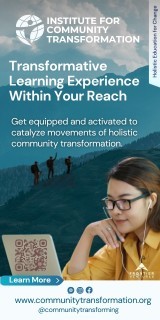
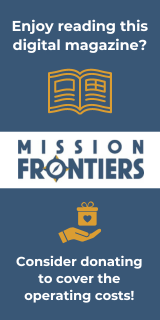
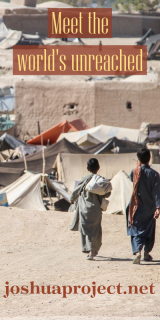
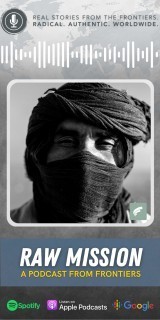
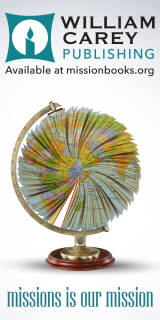
comments